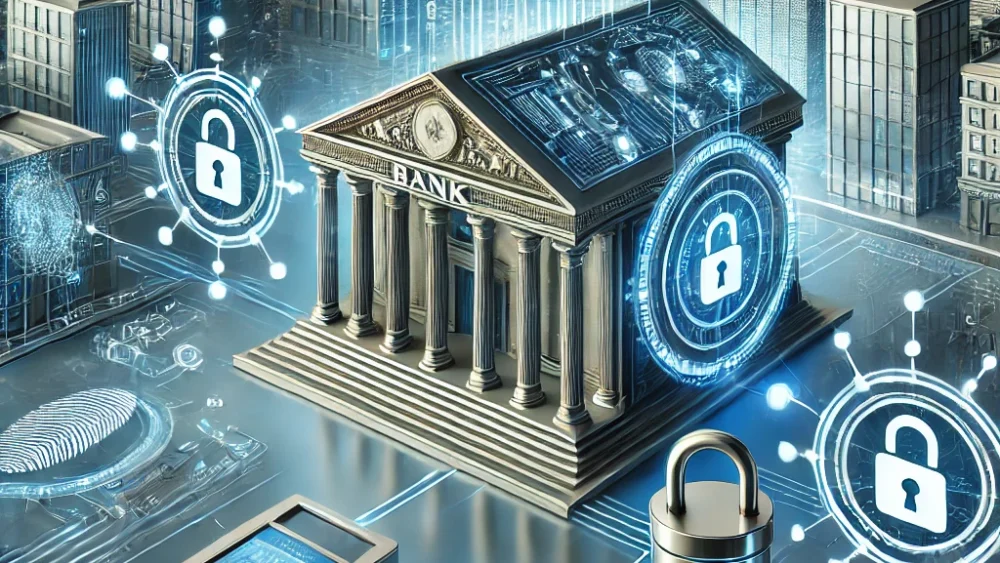In the digital age, financial institutions face increasing threats from cybercriminals aiming to exploit vulnerabilities for financial gain. As technology continues to evolve, so do the tactics used by fraudsters. To combat this growing challenge, American banks have invested heavily in tools, infrastructure, and customer education to strengthen their digital fraud prevention systems.
Digital fraud can take many forms, including phishing, identity theft, account takeovers, and payment fraud. In response, banks are adopting a proactive and multi-layered approach. Rather than relying solely on reactive security measures, they are working behind the scenes 24/7 to predict, detect, and prevent suspicious activity. This dedication not only protects customers but also strengthens public trust in the financial system.
Advanced authentication methods are becoming the new norm

Passwords are no longer sufficient to secure accounts in today’s digital world. As a result, American banks are increasingly turning to multifactor authentication (MFA) and biometric technologies to protect customer access. These tools combine something the user knows, like a password, with something the user has, such as a mobile device or fingerprint, creating an extra layer of security.
Biometric authentication, including facial recognition and fingerprint scanning, is now standard in many banking apps. These methods offer high accuracy and are difficult to replicate, making them an excellent defense against identity theft. In addition, behavioral biometrics—analyzing how users type or interact with their devices—are also being used to detect unusual patterns that may indicate fraud.
Real-time transaction monitoring is detecting fraud faster
One of the most powerful tools in fraud prevention is real-time transaction monitoring. Banks now use sophisticated algorithms that analyze customer transactions in real time to detect unusual or suspicious activity. These systems compare current behavior to past spending patterns and flag anything that appears out of the ordinary.
For example, if a customer typically shops in New York and suddenly a transaction occurs in another country, the system may automatically freeze the account or alert the customer. Similarly, unusually large purchases or rapid withdrawals could trigger a security review. These automatic systems work around the clock, reducing the chances of financial losses.
Customer education remains a crucial line of defense
While technology is vital, informed customers are equally important in the fight against digital fraud. American banks are prioritizing customer education through awareness campaigns, webinars, emails, and app notifications. These efforts help users recognize potential scams and understand how to protect their personal information online.
Many banks now offer interactive tools that simulate phishing attempts, teaching users how to identify fake emails and suspicious links. They also provide step-by-step guides on creating strong passwords, enabling security features, and reporting fraud. By empowering users with knowledge, banks reduce the likelihood of successful attacks.
Data encryption and secure infrastructure protect sensitive information
Another critical element in preventing digital fraud is securing the infrastructure that stores and transmits customer data. American banks use encryption protocols to protect sensitive information both in transit and at rest. This means that even if data is intercepted, it remains unreadable without the proper decryption keys.
End-to-end encryption is commonly used in banking apps and websites to ensure that communications between the user and the bank are secure. Many institutions also invest in secure socket layer (SSL) technology, which provides an encrypted link between web servers and browsers, safeguarding login credentials and personal data.
Collaborations and industry-wide efforts enhance protection
Fraud prevention is not something banks can achieve in isolation. Collaboration between financial institutions, law enforcement, technology companies, and government agencies is essential. American banks actively participate in industry-wide initiatives designed to share threat intelligence and coordinate responses to cyber threats.
One example is the Financial Services Information Sharing and Analysis Center (FS-ISAC), which facilitates real-time information sharing between banks. When one institution detects a new type of fraud, the entire network is informed, allowing others to implement countermeasures quickly. This collective defense approach strengthens the industry’s overall resilience.
Mobile banking security is evolving with user behavior
With more customers relying on smartphones for banking, mobile security has become a top priority. Banks are adapting to this shift by developing mobile apps with built-in security features tailored to user behavior. From secure logins to session timeouts, every aspect is designed to prevent unauthorized access and misuse.
One important trend is the use of contextual authentication, where the app evaluates the context of a login attempt—such as location, device, and time of day—to determine if the action is suspicious. If something seems unusual, the app may request additional verification or deny access altogether.
Artificial intelligence is transforming digital fraud detection
AI and machine learning are revolutionizing how banks detect and prevent fraud. These technologies can analyze vast amounts of data in seconds, identifying patterns that would be impossible for humans to detect. As fraud techniques become more complex, AI becomes essential for staying ahead.
One application of AI is anomaly detection, which pinpoints irregular behavior across millions of transactions. These systems learn from past data, adapting their models to new trends in fraud. When anomalies are found, alerts are triggered instantly, allowing fraud teams to intervene before damage is done.
Regulatory compliance reinforces security standards
Regulatory frameworks play a vital role in shaping how banks address digital fraud. Laws such as the Gramm-Leach-Bliley Act (GLBA) and the Bank Secrecy Act (BSA) require financial institutions to implement robust safeguards and report suspicious activities. These regulations provide a legal foundation for security practices and encourage accountability.
In response to growing cyber threats, regulators have issued detailed guidance on risk management, third-party oversight, and data protection. American banks must demonstrate compliance through audits, documentation, and testing. Failure to comply can result in hefty fines and reputational damage, further motivating banks to invest in fraud prevention.
Future trends in digital fraud protection
Looking ahead, digital fraud will continue to evolve, but so will the tools designed to stop it. Banks are exploring advanced technologies such as decentralized identity solutions, which give users control over their personal data. These systems reduce reliance on centralized databases, making it harder for hackers to steal information.
Quantum computing is another area of interest, offering the potential to revolutionize encryption and cybersecurity. While still in its early stages, this technology could eventually help banks develop unbreakable security protocols. In the meantime, banks are focusing on continuous innovation and adaptability to respond to emerging threats.



